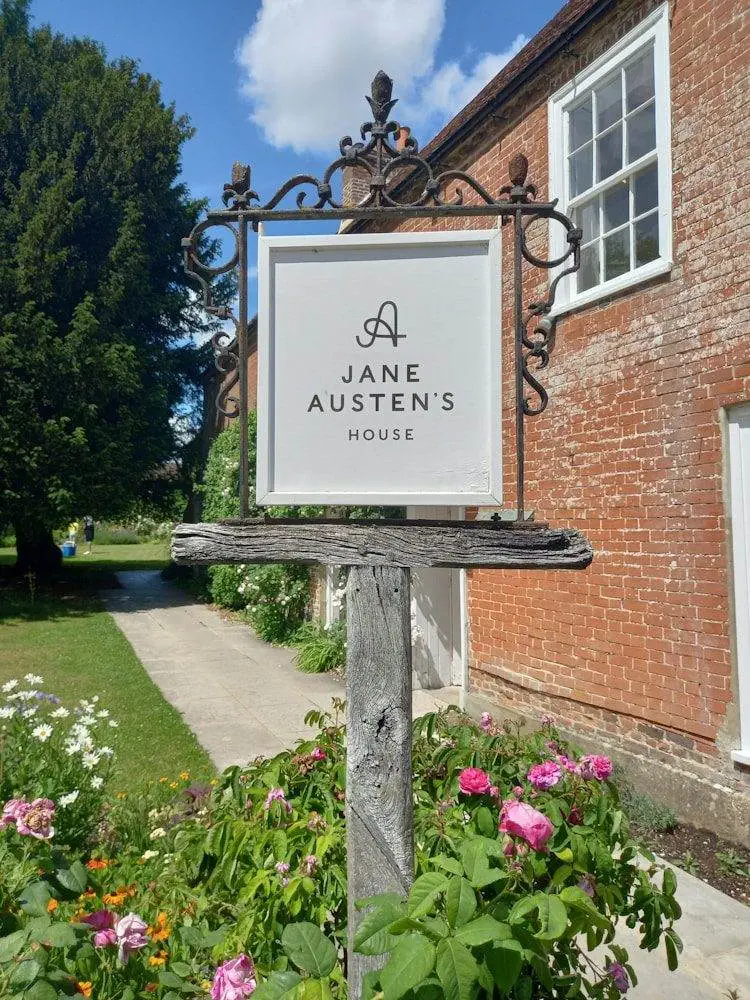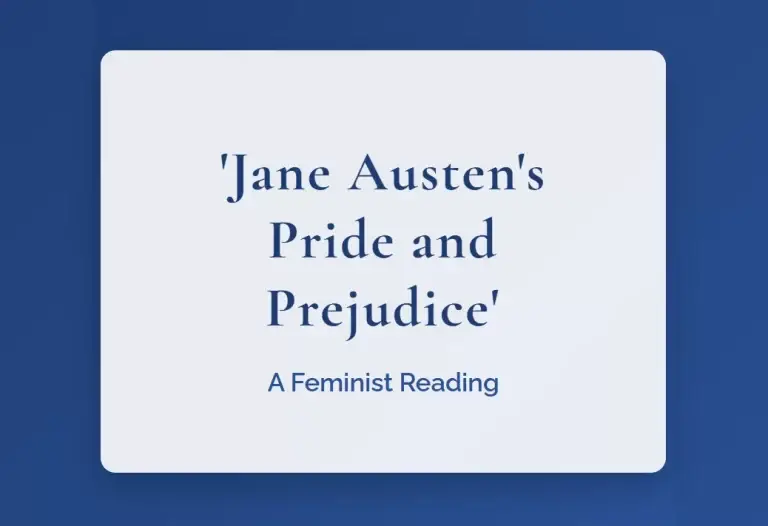Jane Austen’s Pride and Prejudice: Feminist literary criticism is an approach that seeks to understand and analyze literature through the lens of gender dynamics, highlighting the representation of women and the power structures that influence their lives. This critical perspective aims to uncover the ways in which literature perpetuates or challenges patriarchal ideologies. In the context of classic literature, feminist criticism can reveal the subtle and overt ways in which female characters are portrayed and how they navigate the societal constraints imposed upon them.
Jane Austen’s “Pride and Prejudice,” published in 1813, offers a rich text for feminist analysis. Set in the early 19th century, the novel presents a vivid depiction of women’s roles, relationships, and agency within a patriarchal society. By applying feminist theory to Austen’s work, we can gain deeper insights into her critique of gender norms and the social pressures faced by women of her time.
Table of Contents
Women’s Roles in Jane Austen’s Pride and Prejudice
The societal context of “Pride and Prejudice” is one where women’s primary roles were largely confined to the domestic sphere, with marriage being the ultimate goal for most women. This societal expectation is evident in the novel’s opening line, which humorously acknowledges the pressure on women to secure a husband: “It is a truth universally acknowledged, that a single man in possession of a good fortune, must be in want of a wife.”

Elizabeth Bennet, the protagonist, stands out as a character who defies these conventional expectations. Unlike her sisters, Jane and Lydia, who conform more closely to societal norms, Elizabeth exhibits a strong sense of independence and intelligence. Her wit and sharp observations set her apart as a character who questions the status quo. Through Elizabeth, Austen explores the limitations placed on women and the ways in which they can assert their individuality.
Other female characters in the novel, such as Charlotte Lucas and Lady Catherine de Bourgh, provide a contrast to Elizabeth’s more progressive views. Charlotte’s pragmatic decision to marry Mr. Collins for financial security, despite the absence of love, reflects the harsh realities faced by women with limited options. Lady Catherine, on the other hand, embodies the authoritative matriarchal figure who upholds traditional gender roles and expectations.
Relationships and Marriage
Marriage is a central theme in “Pride and Prejudice,” and it serves as a lens through which the economic and social pressures on women are examined. For many characters, marriage is not merely a romantic endeavor but a necessity for social and financial stability. This is particularly evident in the Bennet family’s situation, where the lack of a male heir means that the family estate will be inherited by a distant male relative, Mr. Collins.
Elizabeth Bennet’s perspective on marriage sets her apart from many of her contemporaries. She refuses Mr. Collins’ proposal, despite the security it would offer, because she values personal compatibility and mutual respect over economic convenience. Her eventual union with Mr. Darcy is based on genuine love and respect, challenging the notion that marriage is solely a transactional arrangement.

Through Elizabeth’s journey, Austen critiques the societal pressure on women to marry and highlights the importance of personal agency in making such significant life decisions. This emphasis on choice and mutual respect in relationships can be seen as an early feminist assertion of women’s right to autonomy and self-determination.
Agency and Empowerment
Elizabeth Bennet is often celebrated as a character who embodies female agency and empowerment. Her refusal to conform to societal expectations and her willingness to speak her mind mark her as a progressive figure in literature. Elizabeth’s intelligence and assertiveness allow her to navigate a world that often seeks to silence and marginalize women.
Moments of empowerment are not limited to Elizabeth alone. Characters like Jane Bennet and Charlotte Lucas also exhibit forms of agency, though in different ways. Jane’s quiet resilience and Charlotte’s pragmatic choices reflect the varied ways women can exercise their agency within the constraints of their society.
The critique of patriarchal structures is evident in the way Austen portrays male characters and their interactions with female characters. Figures like Mr. Collins and Mr. Darcy initially embody patriarchal attitudes, but through their relationships with women like Elizabeth, they are challenged and transformed. This dynamic illustrates Austen’s nuanced understanding of gender relations and her critique of the power imbalances inherent in them.
Austen’s Subversive Commentary
Jane Austen’s “Pride and Prejudice” is renowned for its irony and wit, which serve as tools for subversive commentary on the social norms of her time. Through her clever narrative style, Austen critiques the limitations placed on women and exposes the absurdities of the patriarchal society in which her characters live.

One of the most notable examples of Austen’s subversive commentary is her portrayal of Mr. Collins in Pride and Prejudice. His obsequiousness and adherence to social conventions make him a figure of ridicule, highlighting the flaws in a system that values wealth and status over personal integrity and genuine emotion. His proposal to Elizabeth, and her subsequent rejection, serves as a critique of the societal expectation that women should prioritize financial security over personal happiness.
Lady Catherine de Bourgh represents another target of Austen’s critique in Pride and Prejudice. As a domineering matriarch, she epitomizes the rigid adherence to social hierarchy and gender roles. Her attempts to control Elizabeth and dictate her choices underscore the oppressive nature of these societal expectations. Elizabeth’s defiance of Lady Catherine’s demands is a powerful assertion of her agency and resistance to patriarchal authority.
Austen’s use of irony extends to her depiction of the marriage market. The novel’s famous opening line is a prime example of this, as it simultaneously acknowledges and mocks the societal obsession with marriage as a means of securing social status and economic stability. Through her sharp wit, Austen exposes the superficiality of such values and advocates for a more genuine understanding of human relationships.
Conclusion
Reading “Pride and Prejudice” through a feminist lens reveals the depth and complexity of Jane Austen’s critique of the societal norms that constrained women’s lives in the early 19th century. By examining the roles, relationships, and agency of her female characters, we can appreciate Austen’s subtle yet powerful commentary on the limitations placed on women and their capacity for empowerment.
Elizabeth Bennet stands as a beacon of female agency in Pride and Prejudice, challenging the expectations imposed upon her and asserting her right to choose her own path. Through her journey, Austen advocates for personal autonomy, mutual respect in relationships, and the importance of genuine connection over social and economic convenience.
Austen’s use of irony and wit further underscores her subversive critique of patriarchal structures, making “Pride and Prejudice” a timeless work that continues to resonate with contemporary readers and feminist critics alike. By exploring the novel’s themes and characters through a feminist perspective, we can gain a deeper understanding of Austen’s literary genius and the enduring relevance of her work.
Ultimately, “Pride and Prejudice” not only provides a captivating story of love and personal growth but also serves as a powerful commentary on the gender dynamics of its time. Austen’s nuanced portrayal of women’s roles, relationships, and agency offers valuable insights for feminist literary criticism and highlights the enduring impact of her work on the literary canon.



2 Comments
Pingback: The Edible Woman by Margaret Atwood: A Comprehensive Guide - LitGram by MukeshRishit
Pingback: The Hour Is Come: Exploring Louisa Lawson's Feminist Battle Cry - LitGram by MukeshRishit